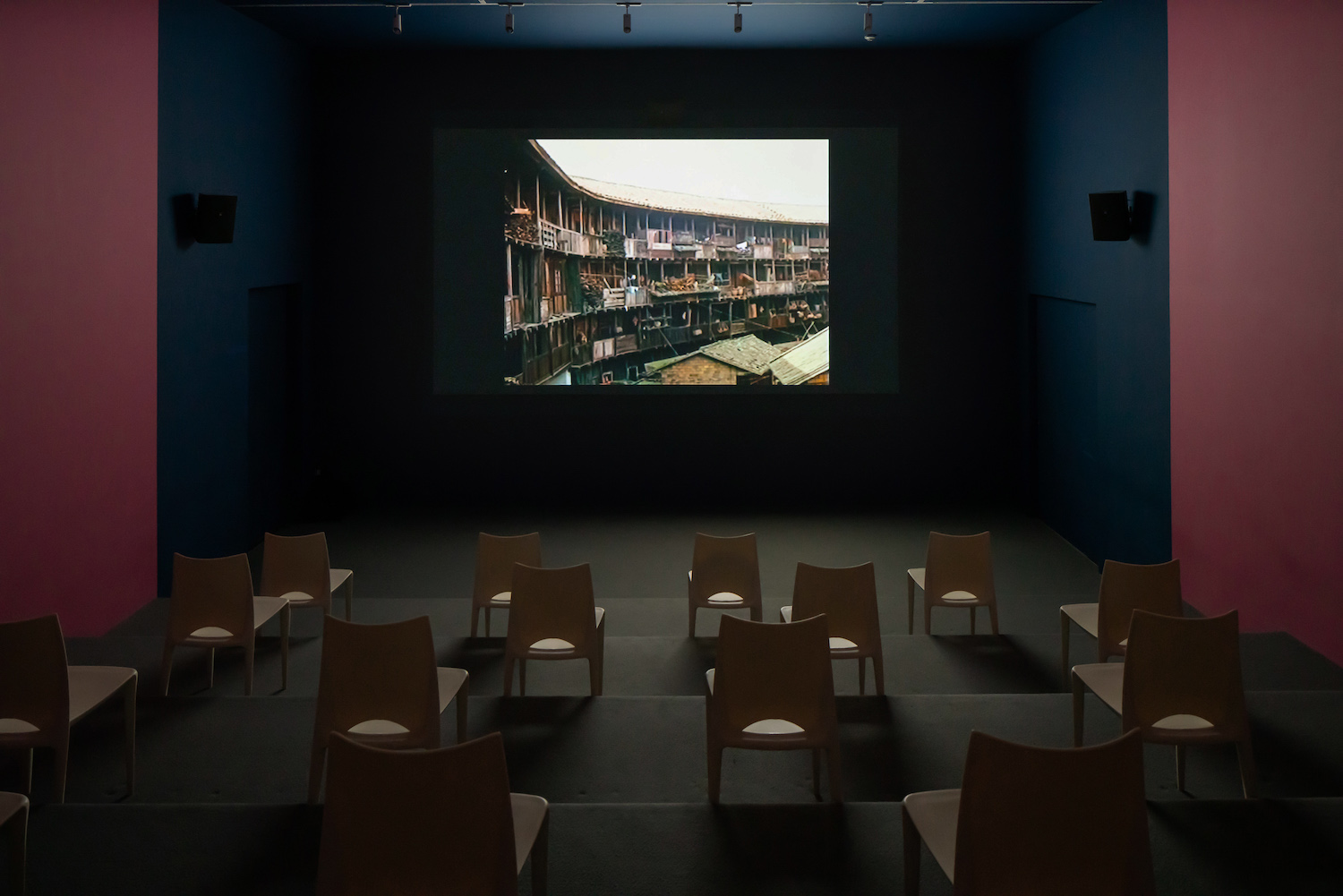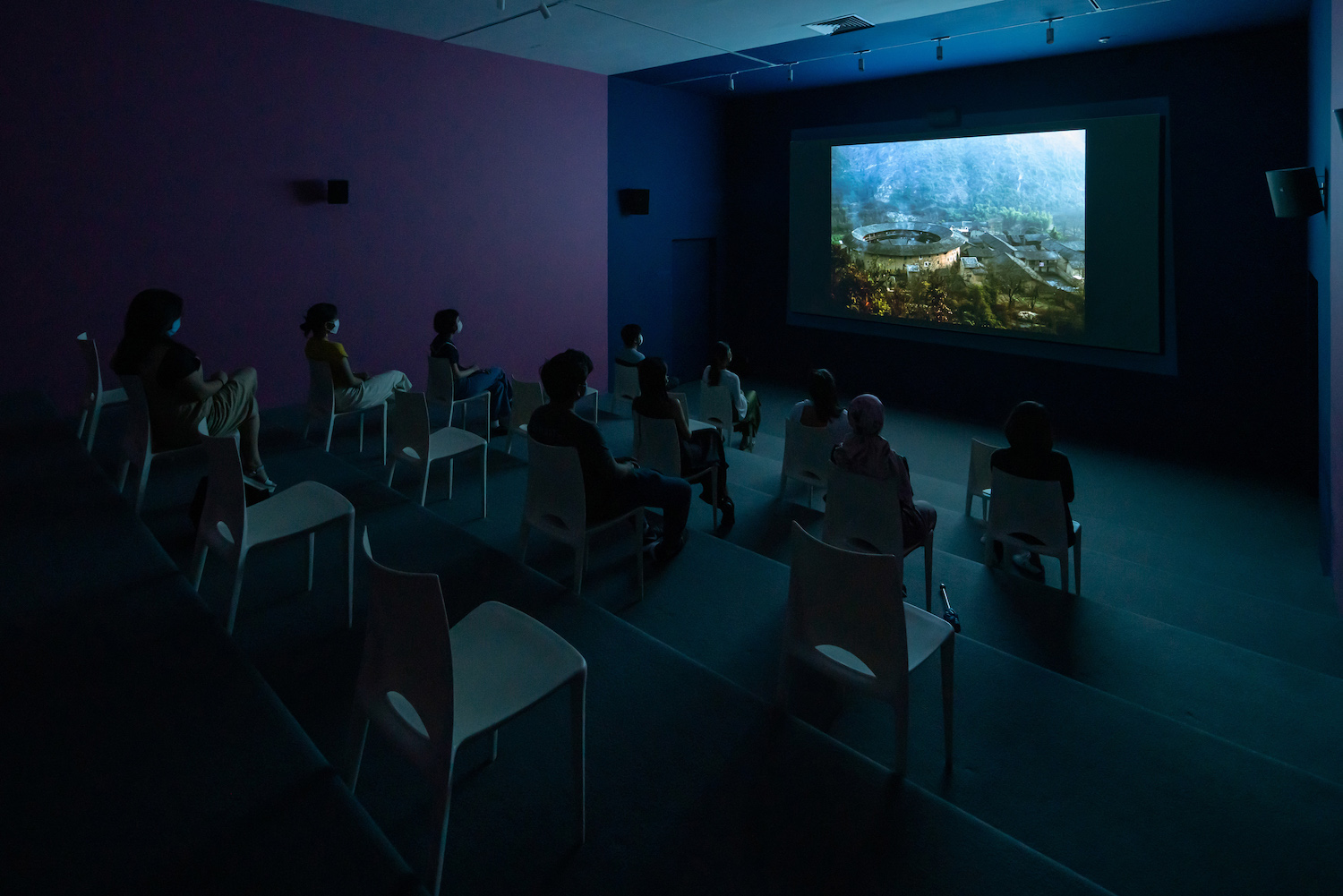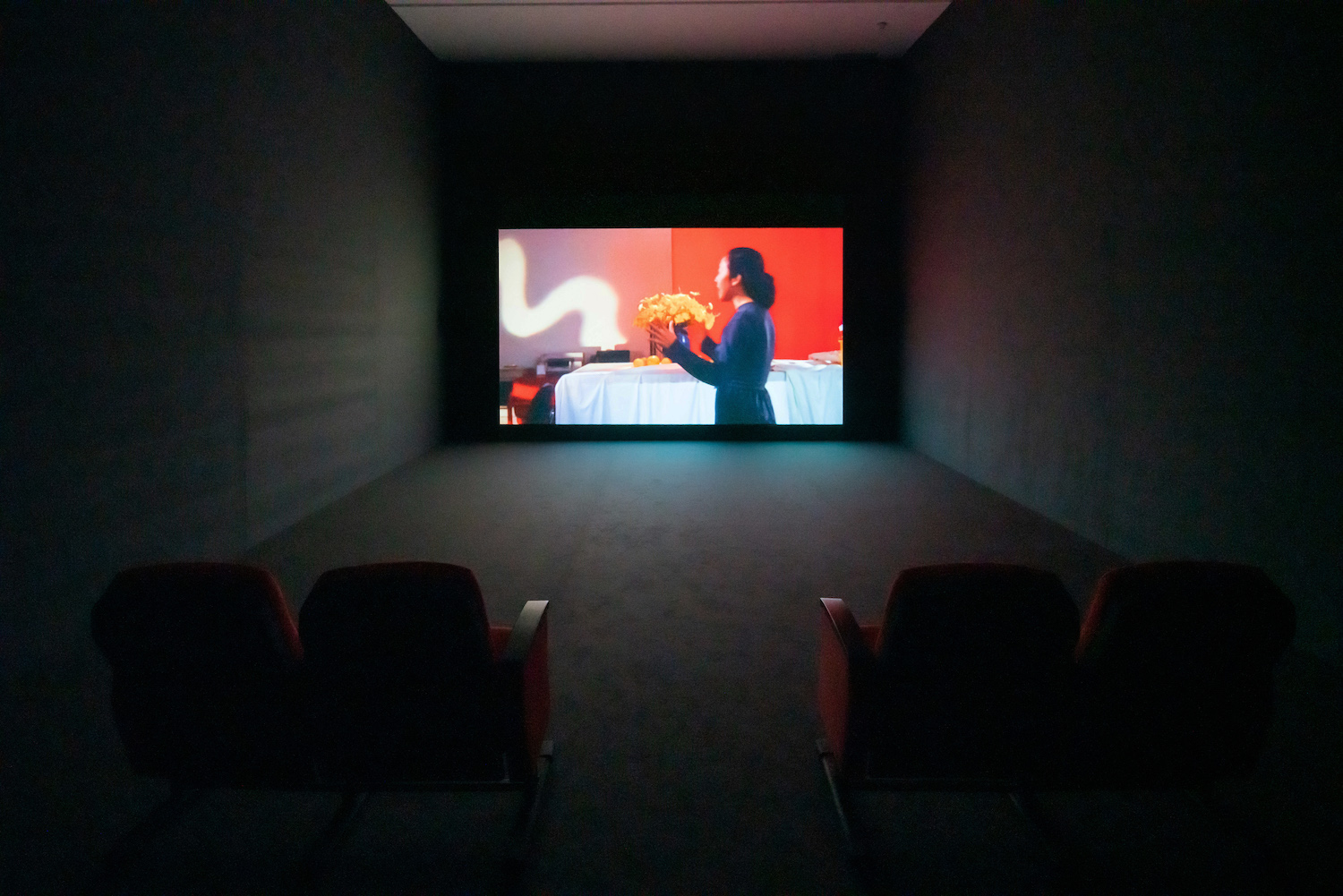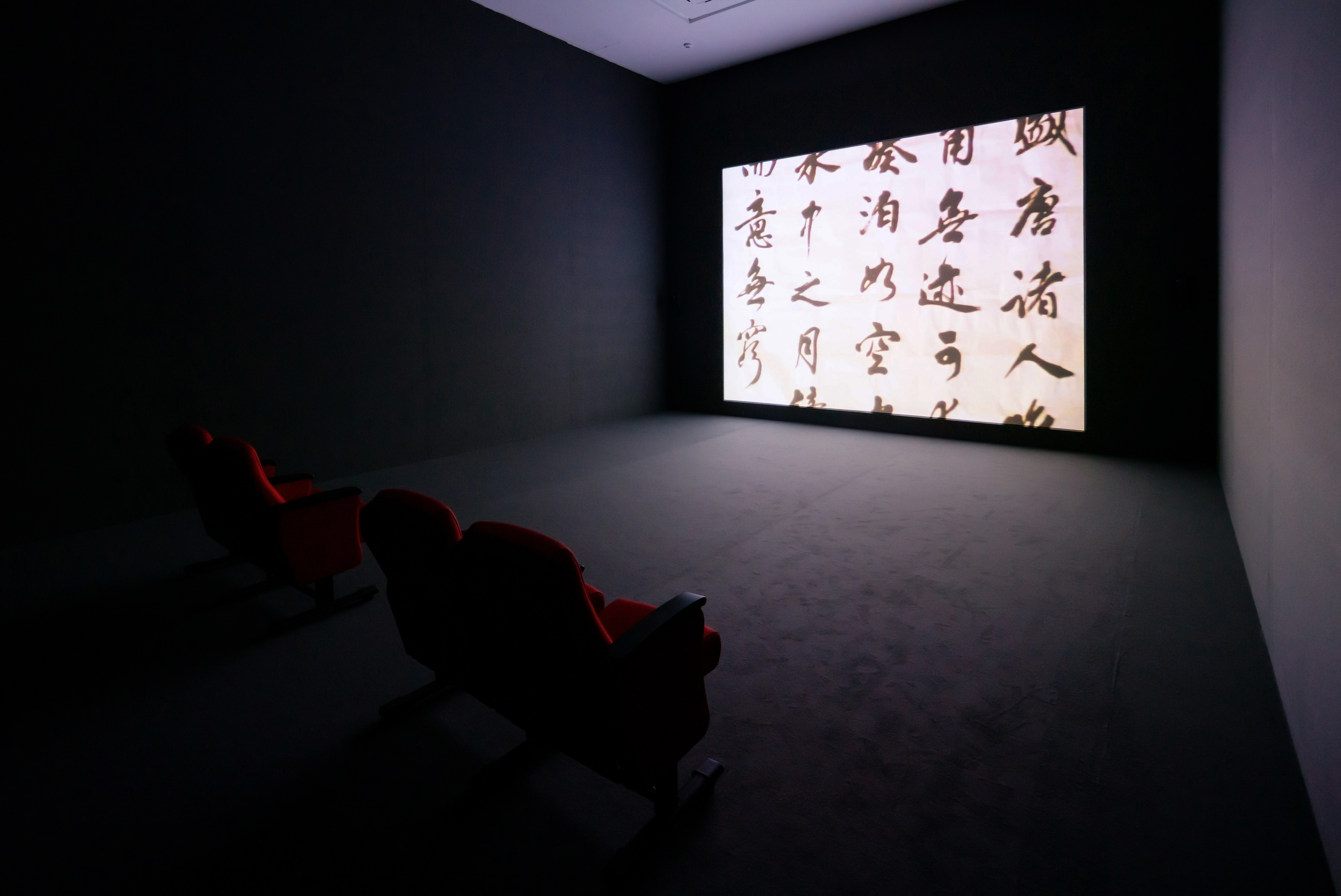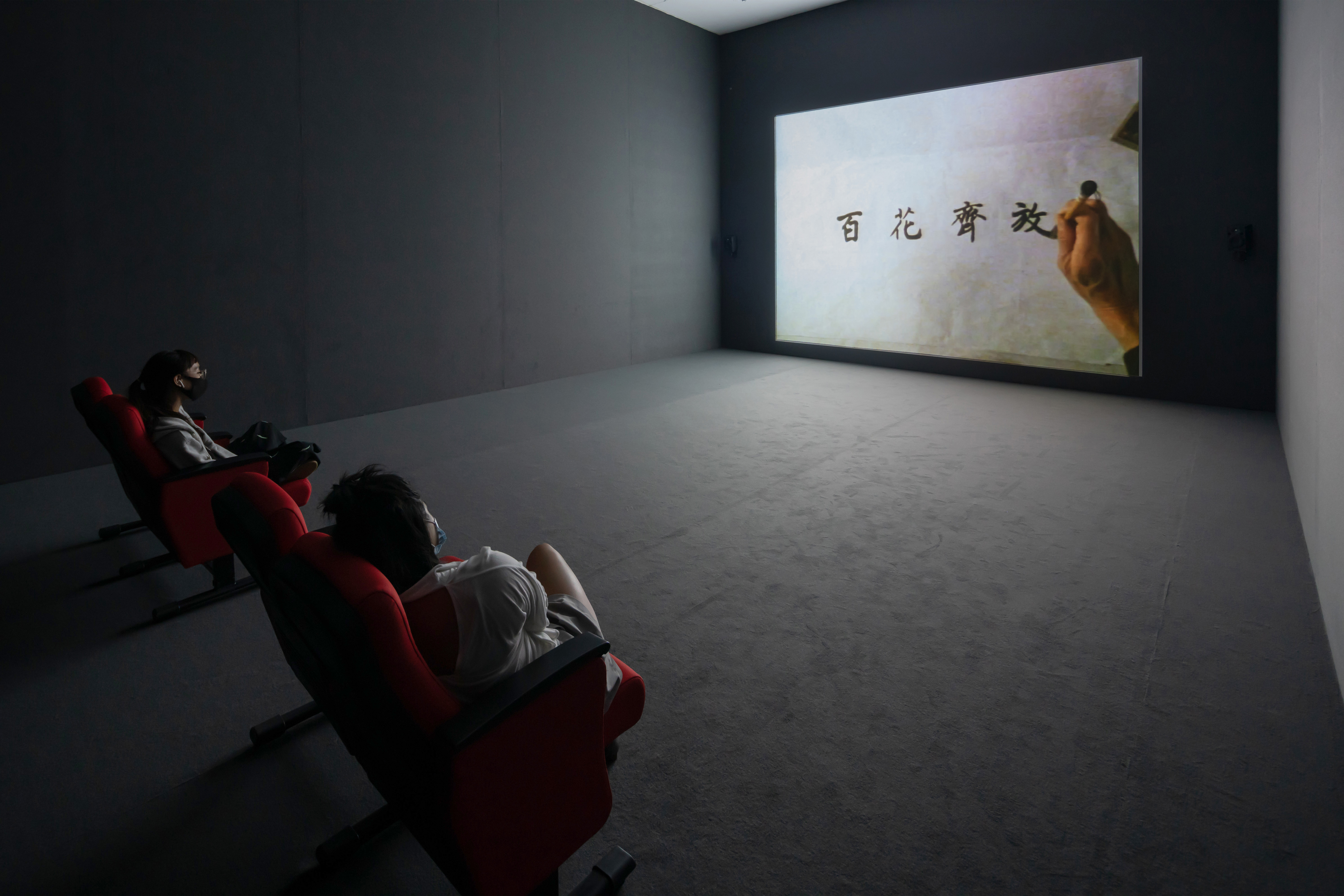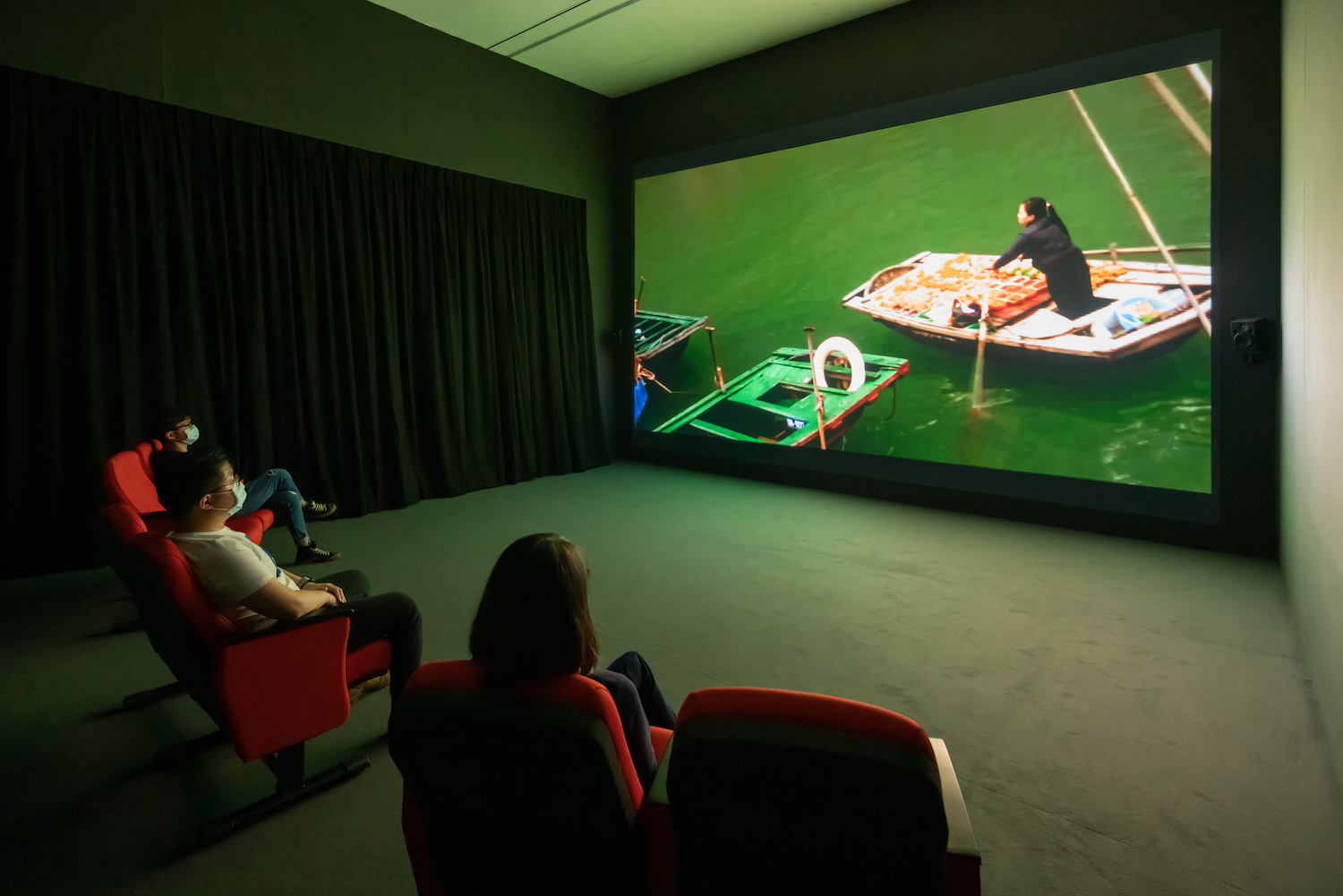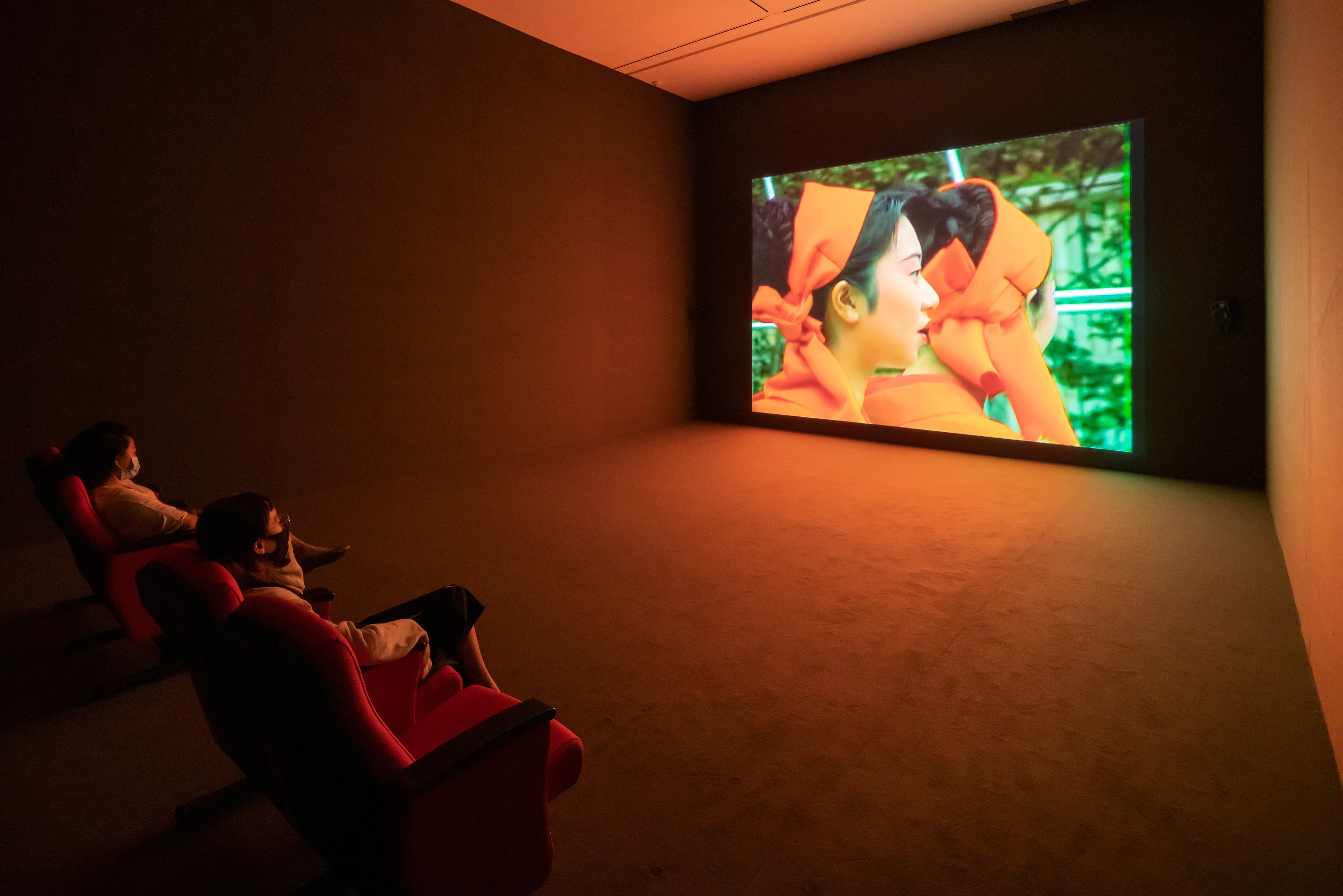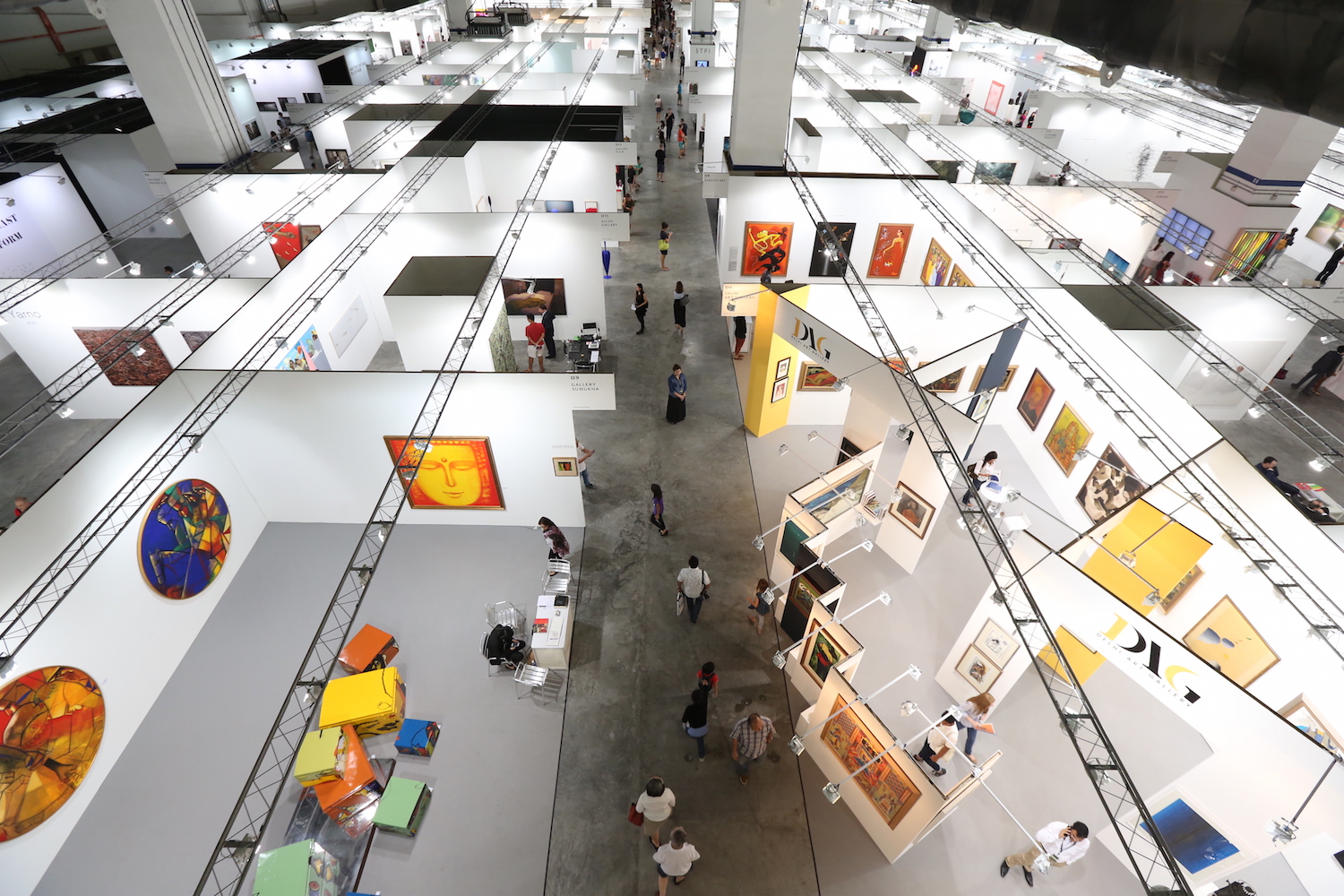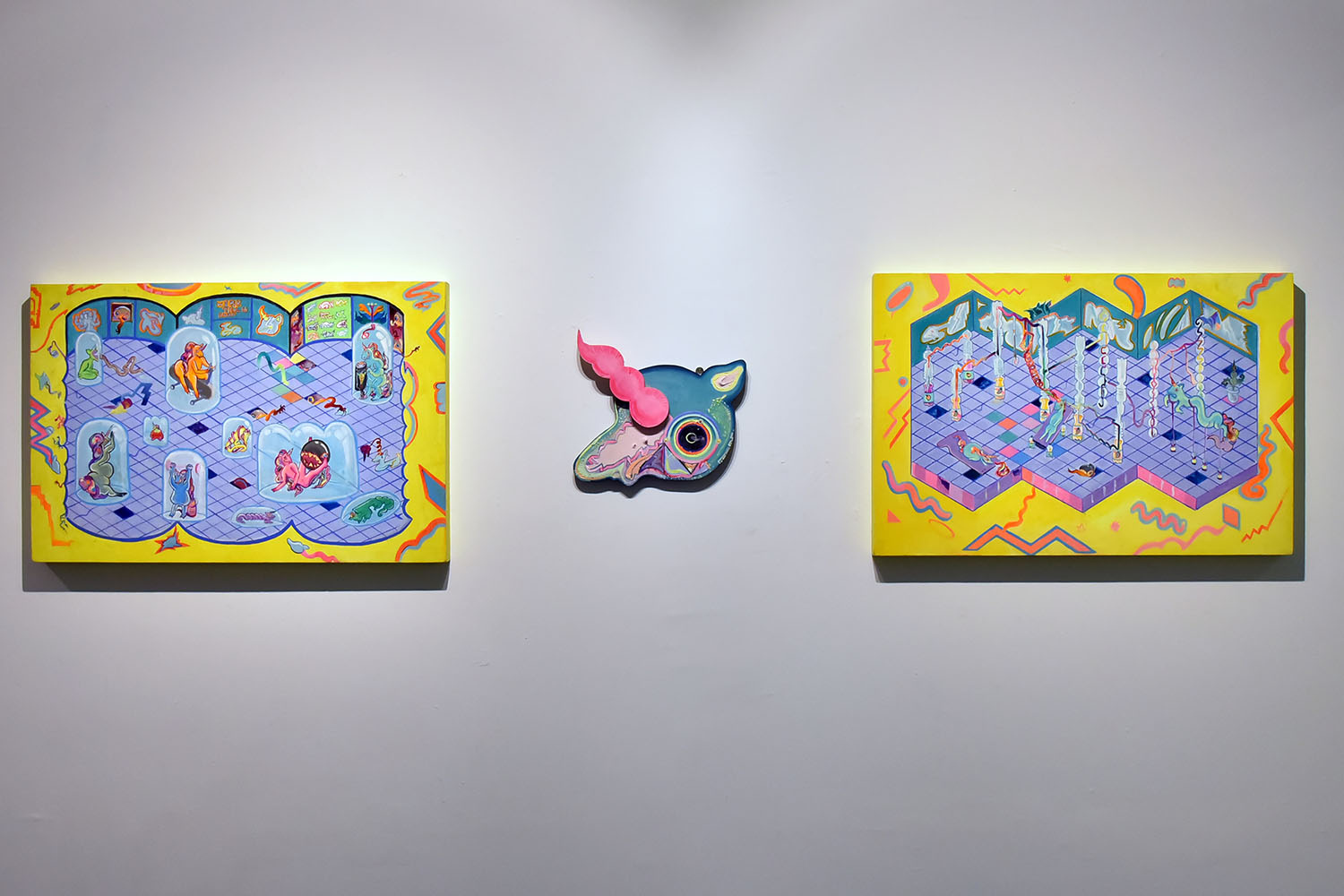Trinh T. Minh-ha’s newest film, What About China? (Part I of II), 2020–21, seems to present a formalist experiment in the medium of film, taking architecture as subject matter and, through her eyes, inviting the viewer to see it anew. The film starts with introductory shots of massive Hakka roundhouses, showcasing vernacular designs that are as consciously geometric as they are overloaded with theatrical earthen or wooden frames and elaborate household materials. Inside the large multi-family communal living structures, we also catch glimpses of ancestor rooms, marriage rooms, courtyards, all put into dialogue with facades, gables, columns, windows, clotheslines, walking paths, log piles, and woven baskets.
While the artist’s camera moves slowly through the circular corridors and wooden doors of these centuries-old buildings, we hear her voice intermingling with the laughter of children and chatter of villagers. In this scene and throughout, filmmaker, composer, and writer Trinh speaks about her perception of China and particularly what China means to her — and not just in visual terms. She often attempts to compose the “music” of China from everyday sounds. Cut to the mountainous forests of south China and the region’s spectacular ganlan-style buildings supported by thick wooden stilts. We hear a single erhu note, warm and soulful. Now we are in the Buddhist heartland of mountains, hip-and-gable-roofed temples, and steep concrete stairways. In the background, the sounds of the sheng, erhu, and bawu are like ghosts. They slink around the trees, mountains, and buildings, moving in all directions, forming their contours and content in a formless breeze.
Cut to close-up shots of a pensive young woman thinking about her husband as she carries her baby dressed in resplendent traditional costume. Somewhere, a growling male voice and sobbing sounds from a mother-daughter pair float up from the lower stories. Trinh presents an endearing, somewhat romantic sonic portrait of China, the effects of which linger on in the imagination. In particular, the Chinese notion of harmony is an underlying feature throughout the film; the artist touches on what is highly valued by Chinese people, basic principles of nature, humanity, and society, while systematically bridging the gap between ancient and modern, between inner thought and external conflicts, feudalism, and politics.
Capturing the spirit of China, these haunting, atmospheric images suggest a process of pure observation that obtains some essence of its subject matter. Natural light from a window casts a warm glow in a dark room with little else except for three bowls of rice and chopsticks left untouched on a table and two iron washbasins on the floor. Two old men smoke long black pipes: one has clear and profound eyes, the other has a mouth that is bitter and sad. One can almost see the comings and goings of their somber, poignant thoughts. Communal courtyards, a village playground, dilapidated houses, a back alley with a winding stone stairway: all have instantly become places of poetry.
In one scene, three toddlers with dirty faces and legs plastered with mud climb a fireplace in an old Chinese kitchen to reach their favorite snacks. When caught in the act by the author, they smile shyly and burst into peals of laughter. One of them, still blushing through the mud caked on his face, gives a sheepish grin before hastening to close the door on the audience. In this scene, you feel the poverty and the joy of the village children captured in an extraordinary manner. No doubt, there is humanity in Trinh T. Minh-ha’s oeuvre, including in her earlier films showcased in the exhibition such as Shoot for the Contents (1991), The Fourth Dimension (2001), Night Passage (2004), and Forgetting Vietnam (2015). Whether her footage contains human beings or not, the landscapes, buildings, and still lifes she depicts all embody her acute feeling for nature, country, and things.

